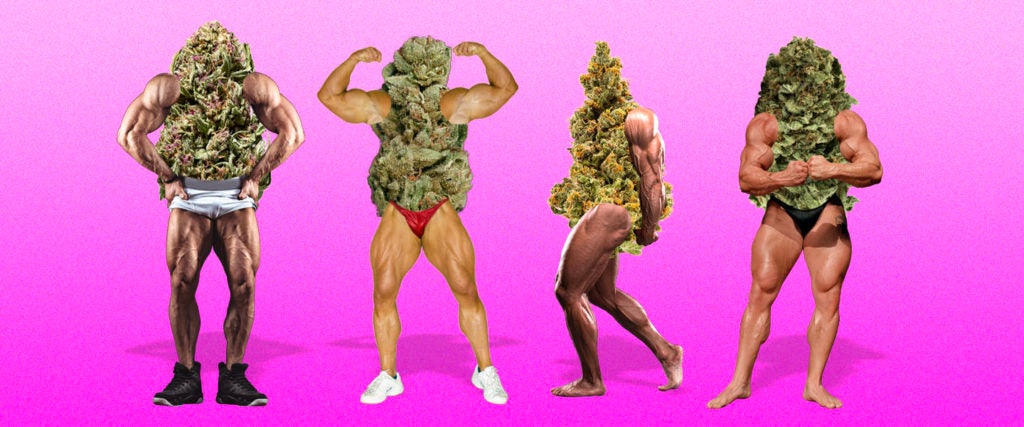When I first started smoking marijuana during my first semester of college 12 years ago, I would buy my weed at an unmarked storefront, run by an older Persian man who always made sure to give me a little more than I paid for.
I was in L.A., but during a time when medical marijuana was tightly regulated and black-market shops thrived. Finding good weed wasn’t a problem, but the most potent bud and hash seemed way out of reach, not to mention my budget. I just presumed that the Sour Diesel I was picking up at $35 an eighth was a B+ product by the standards of the time — superior to the four percent swag my dad smoked in art school, but nowhere near the full potential of the plant.
What a difference a decade has made: Now, L.A. and every other major legalized pot market is a smorgasbord of high-test marijuana products, from ultra-refined buds to concentrated extracts and even near-pure THCA crystalline that clocks in at 99 percent potency. These days, my daily drivers are vape extract cartridges with THC counts of 76 and 86 percent. Once upon a time, I would’ve freaked out about that. Now, it’s just standard inventory for my friendly neighborhood dispensary.
No wonder that “weed has gotten too strong” is a common meme online, with old-time smokers and newbies alike remarking on the brain-warping potency of today’s dank.
weed is too strong nowadays and it has made everyone on earth psycho https://t.co/1sQvFYwqWR
— patrick (@lunch_enjoyer) June 3, 2021
Some critics suggest that it really is too much, claiming increased addiction risk and bad implications for young brains. On the whole, however, there’s little evidence to suggest that higher-potency marijuana comes with major consequences for everyday stoners; one recent study found that stronger pot doesn’t even lead to higher rates of intoxication among users.
More importantly, marijuana is actually nearing its potency plateau. The last two decades have seen an explosion in the development of pot cultivation techniques and knowledge, leading to insane gains in plant productivity and potency. Through genetic selection and the use of meticulous watering and light schedules, today’s best pot strains can produce flowers that test above 30 percent cannabinoids by weight. But while top-shelf weed is becoming easier and cheaper to produce, we’re reaching the limit of the plant’s own biological limits.
Meanwhile, marijuana concentrate has become the fastest-growing segment in a hot pot market, and its development has sparked an unparalleled potency war. There used to be a time when vaporizing hash oil seemed like a fringe activity (“You look like you’re smoking crack,” as one acquaintance aptly observed to me in college). Nowadays? Odds are, if you live in a city with legalized marijuana, extract is one of the most popular ways to get high.
When it comes to a packaged product that you can’t even examine by eye, smell or touch, the main factor consumers gravitate to is a number, says Nikki Chan, a budtender who works in multiple shops in Venice, California. “For the most part, people come in here and ask for the highest THC percentage they can get for a certain amount of cash. And while I understand why, it’s just such a bullshit way to think about marijuana,” she explains. “We have all this knowledge, and it’s turned into the dumbest competition on the shelves.”
The practical consequences are also absurd. “It’s a shame,” Neil Dellacava, the co-founder of Gold Seal, a San Francisco-based marijuana company, told Forbes. “I find stuff that’s absolutely amazing that I have to throw in the trash because it tests at 18 or 19 percent.”
There’s also, of course, the much bigger question: How much further can weed go, if we’re already living in a world where we can casually rip on 85-percent-purity extracts?
As with flower, top-shelf extracts have become easier to produce, lowering prices and broadening variety. But again, there’s just simply not much room to keep pumping THC numbers.
Ironically, this tunnel vision on potency has blinded us from understanding what actually gets us high: Not merely THC, but also a blend of aromatic terpenes and cannabinoids like CBN and CBG. New research suggests that THC is actually a poor indicator of potency, because it doesn’t account for the so-called “entourage effect” from the body receiving all the chemicals together. This is the new frontier of marijuana research, as it’s still unclear what factors shape the high we feel. Some pot brands have already started labeling their products with lab-testing results that show a breakdown of terpenes like limonene and alpha-pinene, which all have a unique impact on the body. In time, experts say even the hallowed indica/sativa dichotomy won’t be relevant anymore.
Weed potency became a space race as corporate money flooded into the rapidly growing legal marijuana market, but it’s becoming more obvious that there are better, more nuanced ways to pick our medicine. Weed is about as strong as it ever can be, practically speaking. What will change is the way we shop — and what data we care about most.

